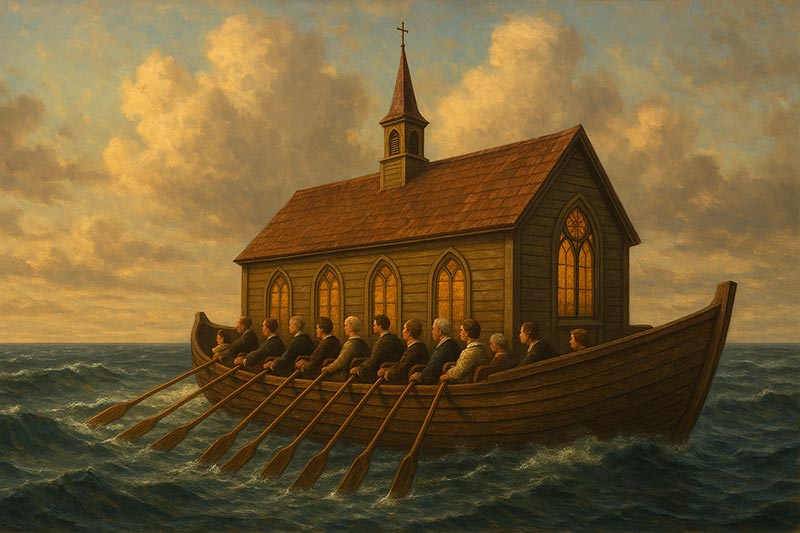
When I was a kid (and even sometimes as a young adult), I thought Mass was kind of boring. Boy, was I wrong! Turns out I just didn’t have anybody explain what was really going on.
The deeper I dive, the more fascinating Mass becomes.
As a layperson, sometimes it feels like we are spectators, passively watching the action from our spot in the stands. And while the priest might be compared to the pitcher, performing the essential duties that we can’t do, we’re on the field, too, with an active role to play.
A great perspective awaits us if we dive into some Latin and switch metaphors…
The “nave” is the central part of the church building where the congregation sits. This comes from the Latin word “navis” which means “ship.” This term was likely chosen because the long, central body of the church resembles the hull of a ship, which is itself a symbol of the church as a vessel of salvation.
When you sit in a pew at Mass, you are on a working vessel.
You’re not there to watch someone else pray and worship; you’re here to pray and worship yourself.
By singing hymns and responding to prayers, we demonstrate unity and contribute to the beauty of the liturgy. We also have the opportunity to unite our prayers and intentions with the sacrifice of the Eucharist, allowing us to deepen our relationship with Christ and the Church.
To be clear, our efforts (or lack thereof) do not help nor detract from the intrinsic value and graces made available in the Mass. But our disposition when we attend – the effort we put into rowing while we are sitting in the ship – makes all the difference in how much of those graces we receive.
Meanwhile, your example can inspire those around you to put in a little more effort, too.
Make no mistake, any time you go to Mass, joining your fellow brothers and sisters in Christ in the boat is a very good thing.

Leave a Reply